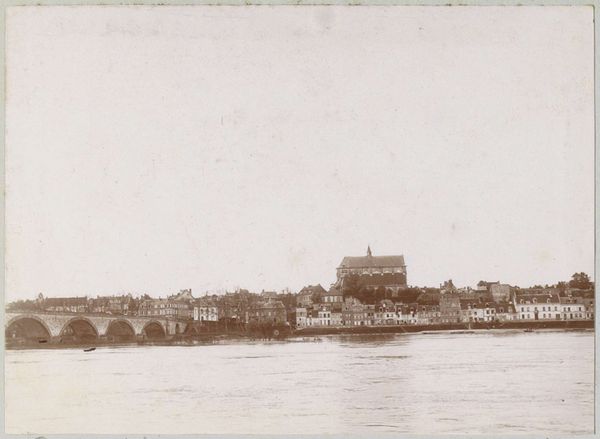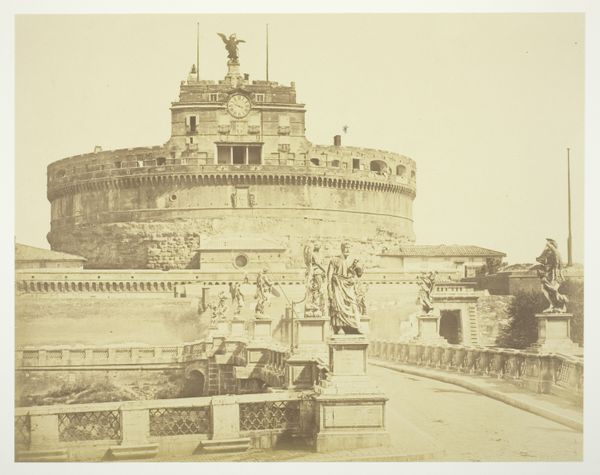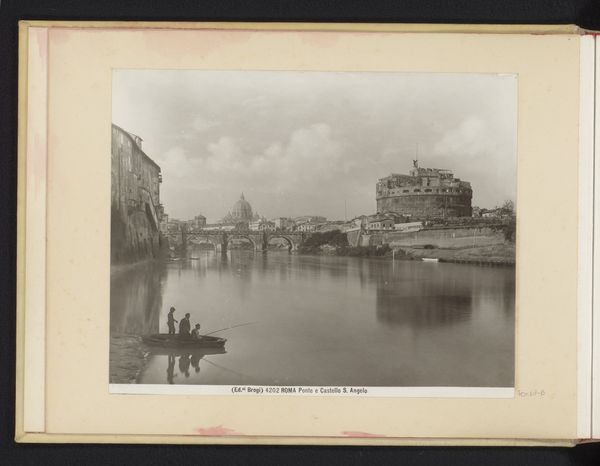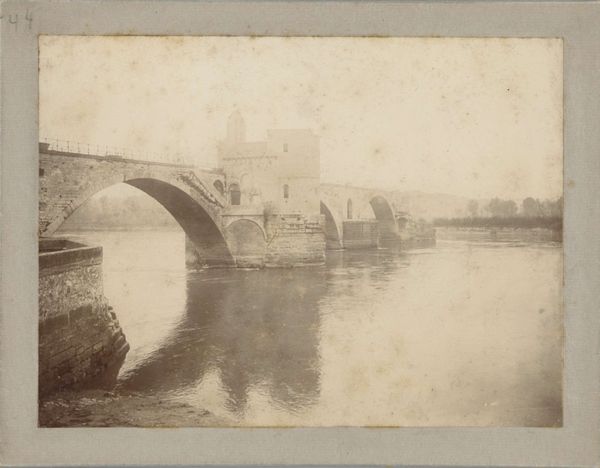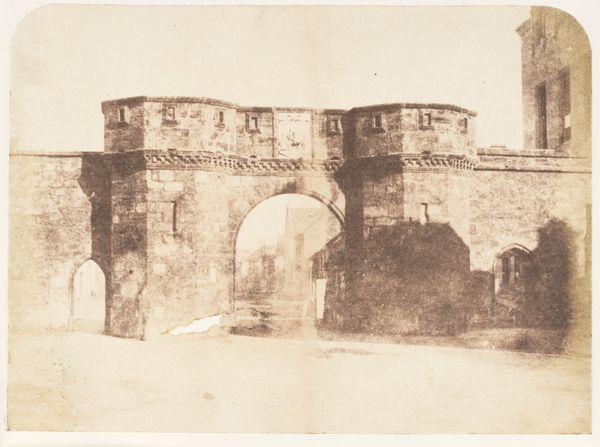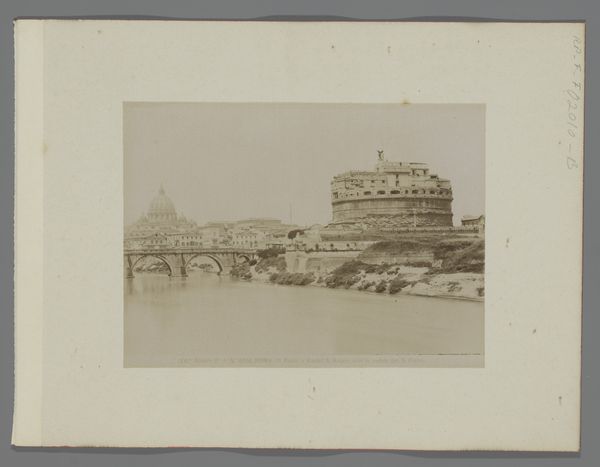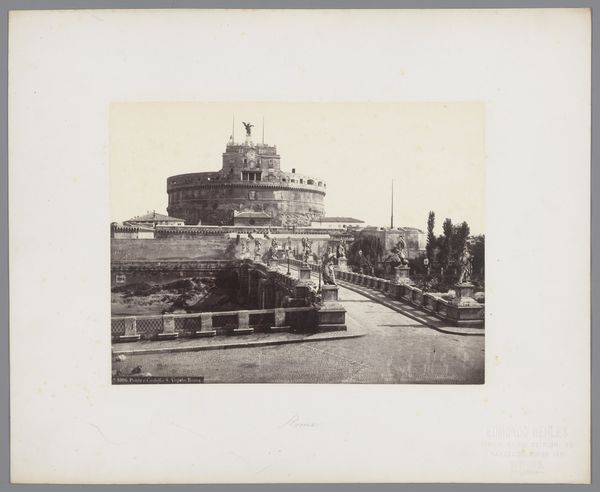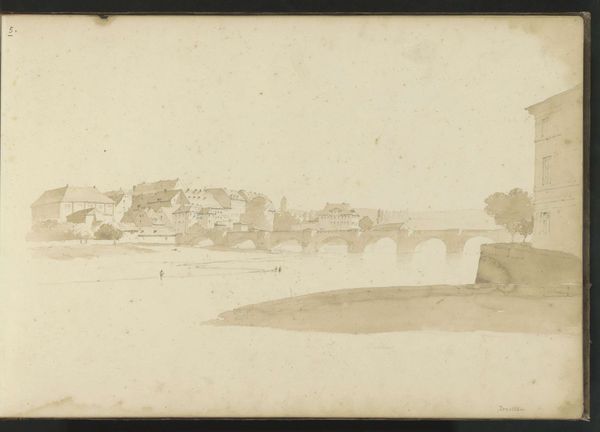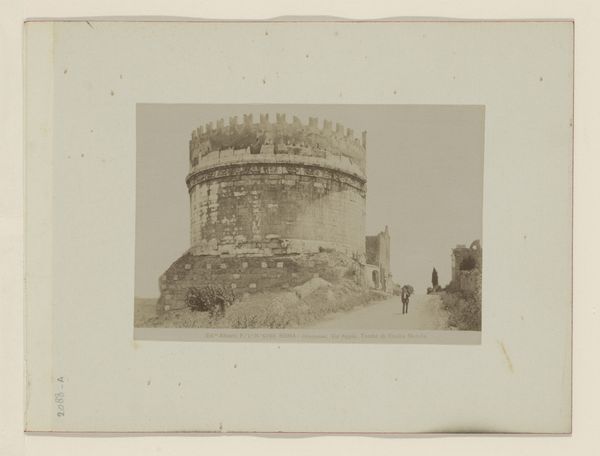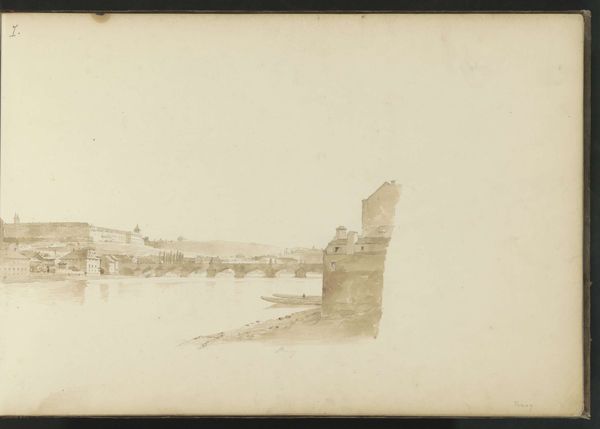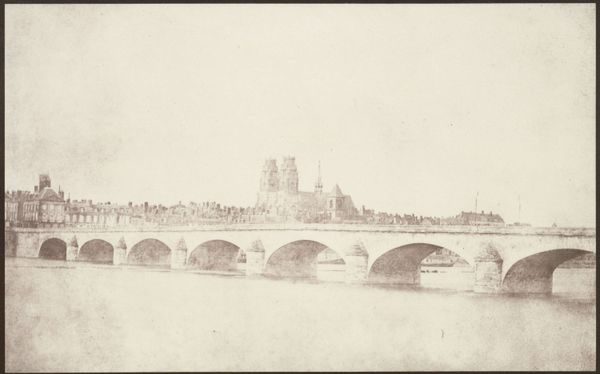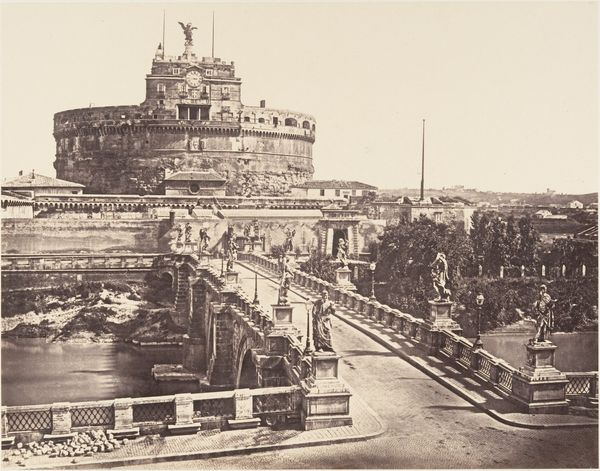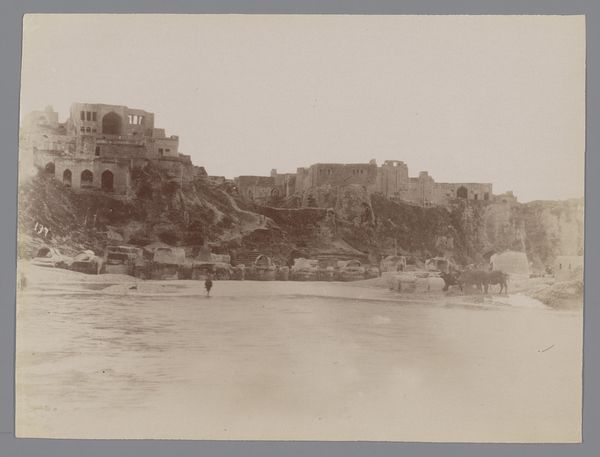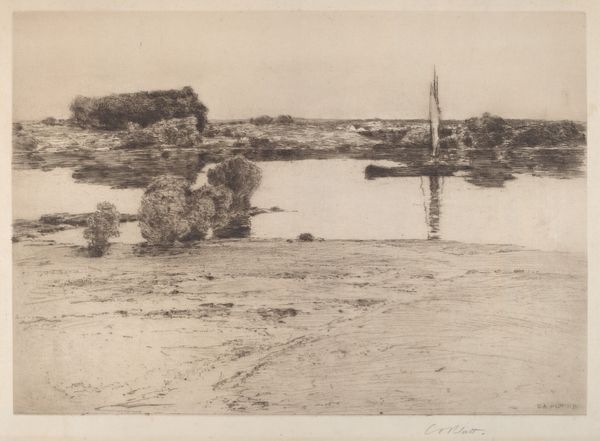
photography, gelatin-silver-print
#
aged paper
#
toned paper
#
landscape
#
photography
#
ancient-mediterranean
#
romanticism
#
gelatin-silver-print
#
cityscape
#
watercolor
Dimensions: height 174 mm, width 235 mm, height 465 mm, width 290 mm
Copyright: Rijks Museum: Open Domain
Curator: The atmosphere here is simply otherworldly; the gelatin silver print is bathed in sepia tones, and the textures give the Angel's castle and its adjacent bridge the feeling of having always existed. Editor: Let's contextualize. We are looking at an artwork called "Gezicht op de Engelenburcht in Rome" by J. Martin, who worked on it between 1845 and 1855. It's fascinating to consider what it meant to capture the city in those days of emerging photographic techniques. Curator: Indeed. It's striking to think about the amount of time that was spent perfecting the print quality on aged and toned paper, because this evokes the weight of history bearing down upon modernity. It also allows the eye to examine the meticulous construction process. The photographer is making more than a simple documentary photo. Editor: Absolutely, it feels less about simple architectural recording and more about framing Rome itself as a powerful cultural artifact, particularly given the bridge's multiple reconstructions and the Castle Sant'Angelo's repurposing through millennia. The question that stands out to me: Whose history and whose city are privileged within that construction? Curator: That's interesting, because photography—as a medium for mechanically reproduced images—began to challenge art’s role as the primary vehicle for commemorating events or people or places. The laborious process to craft gelatin silver prints during that period complicates the perception of the mechanical in photography. Editor: This photo sits interestingly at the intersection of both old and new media and highlights, to your point, its shifting function within society as a democratic visual archive of a growing populace that needed these photographs not only for the recording, preservation, and study of history, but also for leisure and scientific pursuit. I can see the historical context, but it's also an artwork to reflect upon. Curator: Well, what it brings to the fore for me is how deeply embedded craft practice remains in image production, even with technology that purports to make image-making effortless and objective. Editor: In the end, both the technical and social histories contribute to what the work makes visible—and what it obscures. It is powerful that the medium carries its own past with it.
Comments
No comments
Be the first to comment and join the conversation on the ultimate creative platform.
